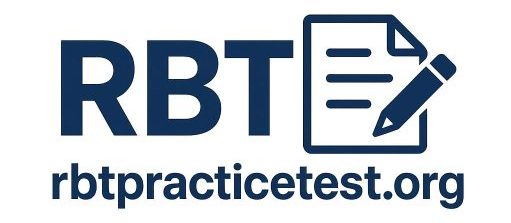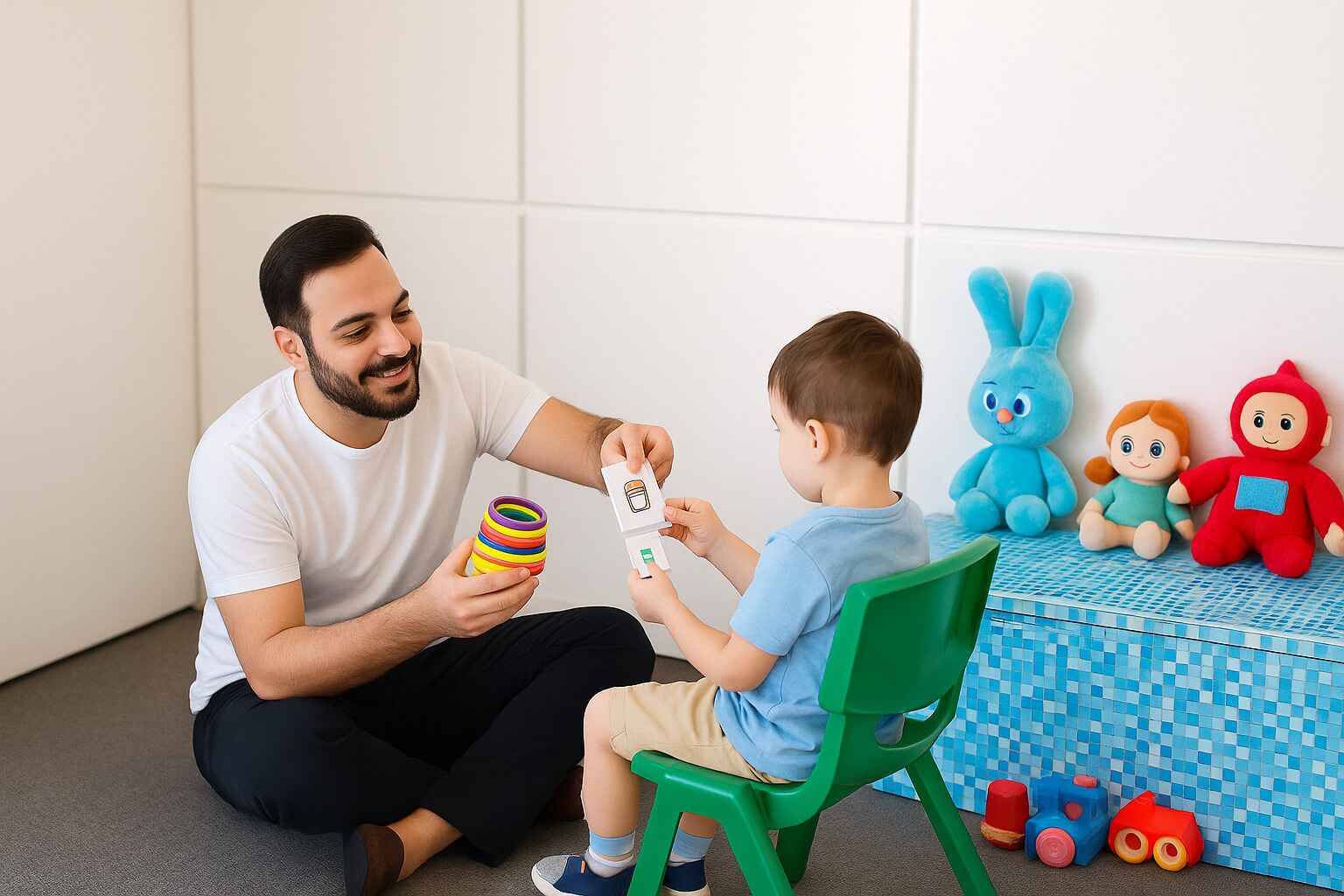This section of our free RBT Exam Study Guide focuses on Measurement, as outlined in Section A of the RBT Task List (2nd Edition). It covers all essential data collection and recording skills RBTs must demonstrate when working directly with clients.
The following tasks are included in this section:
- Prepare for data collection
- Implement continuous measurement procedures (e.g., frequency, duration, latency)
- Implement discontinuous measurement procedures (e.g., partial interval, whole interval, momentary time sampling)
- Implement permanent-product recording procedures
- Enter data and update graphs
- Describe behavior and environment in observable and measurable terms
Measurement is the foundation of evidence-based practice in Applied Behavior Analysis (ABA). RBTs collect data during each session to help monitor progress, track patterns, and inform treatment. Supervising BCBAs use this data to analyze trends and make decisions about interventions, a process known as data-based decision-making.
Task A-1: Prepare for data collection
An RBT should have all data collection materials ready before every session.You can start with analyzing data from the previous session to determine which behaviors to record and which goals to focus on. Based on this analysis, prepare data sheets and materials accordingly.
To prepare for data collection, follow these steps:
- Read and review data from the last session.
- Determine what programs or targets you plan to work on.
- Gather materials required for those programs (e.g., flashcards, visual aids).
- Prepare your data sheets, either printed or digital, based on session targets.
- Set up the first set of programs so they are ready to go when the session begins.
Required materials may include:
- Paper data sheets and a pen (for paper-based systems)
- Tablet or device with the electronic data platform open (for digital collection)
- Timer to measure duration, latency, or interresponse time of target behaviors
- Clicker to count how many times a specific behavior occurs
Tip: Always keep materials easily accessible. If the session takes place in multiple locations (e.g., kitchen, living room, outdoor area), make sure everything can be moved quickly to continue recording and measuring behavior without disruption.
Task A-2: Implement continuous measurement procedures
Continuous measurement procedures involve recording every occurrence of a target behavior throughout the observation period. The supervising BCBA selects which type of continuous measurement to use based on the behavior’s nature and the client’s goals.
RBTs commonly use the following continuous measurement types:
1. Frequency
Frequency measures how often a behavior occurs. It involves counting each instance and is ideal when behaviors have a clear beginning and end.
- Use when: You’re able to tally every behavior in the session.
- Example: “Jacob flapped his hands 12 times during math.”
If time is included (e.g., “per hour”), the metric is considered a rate, not simple frequency.
2. Duration
Duration refers to the total amount of time a behavior lasts, from start to finish. This helps determine how long a behavior is sustained. RBTs can use timers to record accurate durations of target behaviors.
- Use when: You need to measure how long a behavior continues.
- Example: “Lena watched TV for 18 minutes without interruption.”
3. Latency
Latency measures the elapsed time between the instruction (or stimulus) and the start of the behavior. It helps analyze response efficiency and treatment progress.
- Use when: You’re evaluating how quickly a client initiates a response after a prompt.
- Example: “After being told ‘clean up,’ David began picking up toys 45 seconds later.”
4. Inter-response time (IRT)
IRT is the time between two successive responses. It helps track the pace or spacing of behaviors. IRT also provides insights into behavior frequency patterns and pacing.
- Use when: You need to calculate the time between repeated behaviors.
- Example: “Ella asked a question at 2:05 and again at 2:10. IRT = 5 minutes.”
5. Count
Count is a raw number of how many times a behavior occurs, without relation to time. It’s the simplest form of continuous measurement.
- Use when: You just need to track the total number of occurrences.
- Example: “Tom raised his hand 4 times.”
Best practices for RBTs:
- Always record each instance promptly using the appropriate tools (clickers, timers, tablets).
- Ensure you are measuring behaviors as defined in the client’s behavior plan.
- Analyze collected data after each session to inform program adjustments.
Task A-3: Implement discontinuous measurement procedures
Discontinuous measurement procedures involve sampling behavior by observing only some of its occurrences, rather than recording every instance. These methods are used when it’s impractical to track all behaviors in real time, such as in group settings or fast-paced environments.
There are three primary types of discontinuous measurement procedures:
1. Whole interval recording
In whole interval recording, you observe whether a target behavior occurs throughout the entire duration of a pre-defined interval. If the behavior is present for the full interval, you mark “✔”. If it stops at any point, you mark “x”.
- Use when: You want to measure behaviors you aim to increase (e.g., on-task behavior).
- Example: Lilah breaks a session into 2-minute intervals and marks “✔” only when her client engages in repetitive spitting for the full 2 minutes.
This method can underestimate the occurrence of behavior because partial engagement isn’t recorded as present.
2. Partial interval recording
In partial interval recording, you note whether a target behavior occurs at any point during a set interval. Whether it happens once or continuously, you record it as “✔.” If it doesn’t happen at all, mark “x”.
- Use when: You’re monitoring behaviors targeted for reduction, such as SIB or aggression.
- Example: During 7-minute intervals, you record “✔” each time your client engages in head-banging at least once within that time.
This method can overestimate behavior frequency, as it marks even brief occurrences.
3. Momentary time sampling
Momentary time sampling requires you to observe whether the behavior is occurring at the exact moment an interval ends. If the behavior is present at that specific moment, mark “✔”; if not, mark “x”.
Use when: You need a less intensive method for tracking behaviors during long sessions.
Example: A teacher breaks a 45-minute class into nine 5-minute intervals. At the end of each interval, she looks up and records whether the student is on-task.
This method is efficient but may miss behaviors that occur between observations.
Best practices for discontinuous measurement
- Choose the appropriate method based on the behavior’s characteristics and session structure.
- Record observations immediately at the end of each interval to avoid memory bias.
- Analyze your data trends over time to determine progress or need for intervention changes.
Selecting the right sampling method depends on the behavior’s intensity, frequency, and environment. These distinctions are often tested in the task assessment, where you must choose between whole, partial, or momentary recording in real-life scenarios.
Task A-4: Implement permanent-product recording procedures
Permanent product recording assesses behaviors after they have occurred by evaluating the tangible outcomes or lasting changes they produce in the environment. A permanent product is a concrete, observable outcome resulting from a behavior. Examples include completed homework assignments, cleaned rooms, or assembled puzzles.
Use when: The behavior results in a lasting product, direct observation of the behavior is impractical and the focus is on the outcome rather than the process of the behavior.
Example: Academic tasks like counting the number of correctly answered questions on a test or household chores like assessing whether a room has been cleaned based on its current state.
Task A-5: Enter data and update graphs
Accurate data entry and graphing are essential components of ABA. RBTs record session data and update graphs, which enables Board Certified Behavior Analysts (BCBAs) to analyze trends and make informed treatment decisions.
Purpose of data and graphs in ABA:
- Data: Collected during each session, data provides objective information about the client’s behaviors and skills.
- Graphs: Visual representations of data that help in identifying patterns, trends, and the effectiveness of interventions.
Graphs are indispensable tools in ABA, facilitating data-based decision-making and ensuring that interventions are tailored to the client’s needs.
Common graph types in ABA:
- Line Graphs: The most frequently used graph in ABA, line graphs display data points connected by lines to show changes over time.
- Bar Graphs: Useful for comparing discrete sets of data, such as the number of correct responses across different tasks.
- Cumulative Records: Show the total number of responses over time, highlighting the rate of behavior accumulation.
- Scatterplots: Depict the relationship between two variables, often used to identify patterns related to time or environmental factors.
Components of a line graph:
- X-Axis (Horizontal): Represents time intervals (e.g., dates, sessions).
- Y-Axis (Vertical): Represents the measure of behavior (e.g., frequency, duration, percentage).
- Data Points: Each point reflects a recorded measurement at a specific time.
- Data Path: Lines connecting data points to illustrate trends.
- Phase Change Lines: Vertical lines indicating changes in intervention or conditions.
- Phase Labels: Describe different phases (e.g., baseline, intervention).
Best practices for data entry and graphing
- Timely Entry: Input data promptly after each session to maintain accuracy.
- Consistency: Use standardized formats and symbols as directed by your supervisor.
- Accuracy: Double-check entries to prevent errors that could mislead analysis.
- Clarity: Ensure graphs are clearly labeled and easy to interpret.
Tracking data is only useful if entered correctly and consistently. Learn how to enter data and update graphs in ways that support data-driven decisions by BCBAs.
See the example of a line graph below.
Task A-6: Describe behavior and environment in observable and measurable terms
In ABA, RBTs must describe both behavior and the environment in observable and measurable terms. This ensures that anyone, regardless of prior familiarity with the client, can read the notes and record, measure, and analyze behavior with consistency and objectivity.
What Is an observable and measurable behavior?
A behavior is anything a person does that can be seen, repeated, or measured. It must pass the Dead Man’s Test, if a dead person can do it (e.g., “be quiet,” “not respond”), it’s not behavior. Only active, measurable actions qualify.
- Correct: “Client screamed and threw toys when presented with a non-preferred task.”
- Incorrect: “Client was upset and uncooperative.”
The correct example describes visible actions. The incorrect version is subjective and assumes internal states without direct observation.
What Is an observable environment?
The environment includes all stimuli that can be detected through the senses, what the client sees, hears, touches, smells, or tastes. Descriptions should avoid assumptions or interpretations.
- Correct: “The classroom was noisy, with peers shouting and music playing.”
- Incorrect: “The environment was chaotic and stressful.”
Anyone reading the correct example would know exactly what to expect in the environment.
Why it matters
Describing behaviors in this way allows for:
- Accurate data collection: Others can track the same behaviors reliably.
- Clear communication: BCBAs can interpret and act on the data without guessing.
- Effective treatment planning: Objective terms support evidence-based decisions.
Best practices for RBTs
- Focus on what you can see or hear, not on your interpretation.
- Avoid using emotional or mental-state language (e.g., “anxious,” “lazy,” “confused”).
- Use quantifiable details (e.g., frequency, duration, latency) when describing behavior.
- Re-read your notes and ask, “Could someone unfamiliar with this client follow my description?”
Instead of saying, “Client was being defiant,” write, “Client folded arms, turned away, and ignored verbal prompts for 4 minutes.”
Using observable and measurable language ensures your descriptions are accurate and actionable across providers. These documentation practices are mentioned in the RBT exam study guide to prepare you for both the exam and real-world data collection.
RBT Measurement Practice Questions
Once you’ve reviewed the key concepts in the Measurement section, test your understanding with our RBT Exam – Practice Test Section A. This section-wise quiz mirrors real exam scenarios and helps reinforce your ability to apply measurement procedures in ABA settings.

